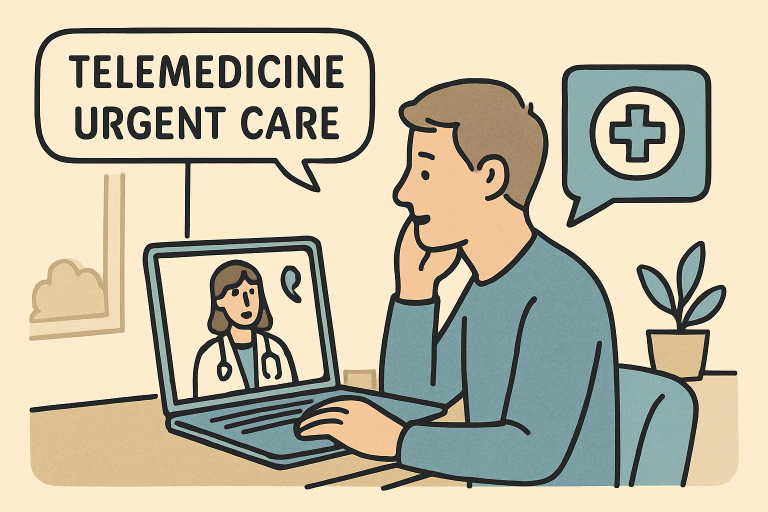How Telemedicine Is Transforming Urgent Care Access
Telemedicine has emerged as a driving force in the evolution of urgent care, fundamentally changing how and when patients receive medical treatment. By harnessing digital communication tools, urgent care is no longer confined to physical clinic hours or locations. Now, technology enables patients to connect with healthcare providers remotely, streamlining access and reducing traditional barriers to care. This shift is making high-quality urgent care more accessible, especially for those who may otherwise face long commutes or extensive wait times. For example, anyone in New Jersey needing immediate care can connect directly with a West Orange NJ Urgent Care center from home, ensuring timely attention.
Beyond convenience, telemedicine also reduces potential exposure to other illnesses in waiting rooms and allows providers to manage more cases more efficiently. This evolution is particularly significant amid current healthcare challenges, empowering patients and providers with safer and faster solutions. Thanks to the rapid adoption of these technologies, families in rural, suburban, and urban areas alike are experiencing better outcomes.

Expanding Access to Care
Telemedicine vastly expands the reach of urgent care by offering patients digital appointments regardless of location. This model is especially effective for rural and underserved populations who historically faced significant barriers due to clinic shortages or distance. Telemedicine bridges these gaps by connecting individuals to certified healthcare professionals in real time, allowing for earlier intervention and reducing costly emergency department visits.
According to a recent article from Time, telemedicine surged in popularity during the COVID-19 pandemic. Still, ongoing investments and advances are helping sustain high adoption rates, proving that the demand for virtual urgent care isn’t just a temporary trend.
Enhancing Diagnostic Capabilities
One of the most transformative aspects of telemedicine is the integration of wearable health devices and artificial intelligence in diagnosis. Wearables continuously monitor vital signs like heart rate, blood pressure, and oxygen levels, offering healthcare practitioners real-time data for fast and accurate assessments. AI algorithms sift through this data instantly, identifying concerning patterns or anomalies so clinicians can act quickly. With high-quality video and image-sharing features, doctors can evaluate rashes, injuries, or other symptoms that benefit from visual inspection, all without an in-person visit.
Integrating with Electronic Health Records
The seamless linkage between telemedicine platforms and electronic health records (EHRs) empowers providers to review comprehensive patient histories during remote visits. This integration supports continuity of care by ensuring any clinician involved in a patient’s urgent care is informed of preexisting conditions, current medications, and previous treatments. As a result, care is safer, more coordinated, and more likely to produce positive outcomes for patients who use telemedicine routinely or as a supplement to in-person visits.
Managing Chronic Diseases
Telemedicine is revolutionizing the management of chronic diseases like diabetes, asthma, and hypertension. Routine check-ins, education, and medication monitoring can now be handled virtually, ensuring regular follow-up and promoting better treatment plan adherence. Patients gain a deeper sense of control over their health and can communicate easily about symptoms or side effects. Such proactive interventions can help prevent costly or dangerous escalations resulting from hospitalizations. The Centers for Disease Control and Prevention notes that telehealth improves access to ongoing care for patients with chronic conditions, leading to better long-term health results.
Specialized Tele-Urgent Care Services
Telemedicine is no longer just for general urgent care. Today, patients can connect with dermatology, psychiatry, pediatrics, orthopedics specialists, and more, often on the same day. This rapid access eliminates traditional bottlenecks in the referral process, ensuring targeted diagnostics and treatment plans are delivered swiftly. Moreover, these virtual specialties are especially beneficial for individuals with mobility issues or those far from major medical centers requiring prompt expert input.
Regulatory and Reimbursement Changes
Policy makers and insurance providers are recognizing the value and effectiveness of telehealth, introducing new rules to support expansion and patient affordability. Recent regulatory shifts mean that telemedicine consultations are increasingly reimbursed at rates comparable to in-person visits, making them accessible for a greater portion of the population. As coverage widens through Medicare, Medicaid, and private payers, more patients can leverage virtual urgent care options without bearing high out-of-pocket costs, ensuring that cost is less of a barrier to timely care.
AI in Triage and Patient Flow
Artificial intelligence also makes urgent care more efficient by streamlining patient intake, assessing symptoms, and determining urgency levels. AI-powered triage tools can prioritize patients based on the severity of their symptoms, quickly routing them to the proper providers or recommending immediate care when necessary. These intelligent systems save time for healthcare staff and enhance patient satisfaction by minimizing unnecessary delays and improving the accuracy of care recommendations. As AI technology continues to improve, it is expected to play an even greater role in optimizing patient flow in urgent care environments.
Final Thoughts
Telemedicine’s integration into urgent care signifies a new era of patient-centered healthcare, where convenience, safety, and quality converge. As digital health solutions evolve, urgent care providers are better equipped to meet the needs of diverse populations efficiently and compassionately.
